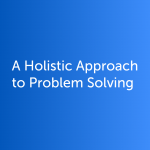Originally posted at FoodBytesWorld.com
 Fish make up 16% of animal protein consumed globally, and demand is set to rise (Tech Crunch) for a variety of factors. Unfortunately, the world’s supply of fish is dwindling, with an estimated 60% of the world fisheries fully-fished and 33% overfished (FAO). With a need to produce more seafood in an increasingly resource-constrained environment, innovation is finally hitting its growth stage.
Fish make up 16% of animal protein consumed globally, and demand is set to rise (Tech Crunch) for a variety of factors. Unfortunately, the world’s supply of fish is dwindling, with an estimated 60% of the world fisheries fully-fished and 33% overfished (FAO). With a need to produce more seafood in an increasingly resource-constrained environment, innovation is finally hitting its growth stage.
One novel technology on the forefront of such innovation is LocalCoho. The startup presented and took top honors in the Food Tech category at our recent FoodBytes! Chicago. Recirculating Aquaculture Systems (RAS) produces fish sustainably while controlling for the negative consequences associated with traditional open-ocean fish farming, like escape, disease or ecosystem degradation.
Our own Nina Meijers spoke with LocalCoho investor and strategic advisor Daphne Mazarakis to discuss how the company is uniquely positioned to tackle the challenges of the seafood industry while bringing affordable, sustainable seafood to the masses.
You’ve called seafood innovation the final frontier for food innovation. Why is the industry so behind and how is LocalCoho bringing it into the 21st century?
I spent eight years with Kraft Foods early in my career, a large proportion of which was spent in grocery stores watching one development after another improve the way we source, distribute and package food. Seafood, however, never experienced the same pace of change or ideation. We’re just starting to see the innovation required to tackle its notoriously complex supply chain and the issues that stem from the lack of regulations and certifications the rest of the food world knows as standard.
Right now, salmon is the most consumed seafood in the US (it’s a $5B industry) and consumers are willing to pay for quality. But limited supply means importing millions of fish every year, paying top dollar for short summer seasons of Alaskan salmon and using open ocean net pens to make up for the shortfall – where the battle to prevent escape and the spread of disease is an uphill struggle.
LocalCoHo offers a safe, affordable and sustainable alternative. We raise non-GMO, certified organic eggs in fresh water so our process is simpler, more cost efficient and environmentally friendly. A closed contained operation also means salmon can be raised locally with no risk of escape or disease, we don’t need antibiotics or chemicals and our product is 100% traceable.
It’s a combination that’s making waves all its own, because it allows us to deliver sushi-grade salmon at a better price than its imported counterpart, which may have been transported thousands of miles before reaching the customer’s plate.
How is LocalCoho’s technology setting it apart in the industry and making waves in the sustainable seafood category?
LocalCoho is raising land-based, freshwater salmon using MixedCell RAS Recirculating Aqua Culture System technology. Our facilities are designed with long shallow tanks that rely on gravity, keeping our operational costs down. We reuse 90% of our water supply, we use zero antibiotics or chemicals and we can also scale the business to ensure supply year-round. Comparatively, there are about 3.2M wild-caught Alaskan Coho salmon available during its short season. It’s highly priced and it’s over-fished. LocalCoho is able to provide consumers organic, sustainable, local and affordable salmon.
I believe a closed contained operation is one of the best alternatives the seafood market has right now, but I don’t think any single disruption will solve the myriad of problems the industry needs to overcome. There’s also cell-based seafood, plant-based seafood and other new ideas and technologies coming surfacing. As a business, we’re delighted to be part of the solution, but as a person who understands the bigger picture, I’m interested to see what other innovators will bring to the table to help.
What’s next for LocalCoho? What do you need to fulfill your goal of bringing sustainable seafood to the masses?
Right now, we’re about staying true to our agile business model and doing what we set out to do, well. That means focusing solely on salmon for now, using the learnings from our proof-of-concept facility in upstate New York and preparing the business for the new markets on our roadmap, starting with Chicago.
Our model is to take our prototype to larger areas of opportunity and build these next-to-local markets so consumers can get fully traceable, sustainable, but also local Coho salmon. We’re building a facility that is 3-5x larger and with the help of Grow Forward, one of our early investors who are also behind other Chicago brands like MightyVine tomatoes and Local Foods. We will be looking for additional strategic capital partners when we begin our expansion plans next year.
Seafood has waited a long time for innovation to reach its shores and it feels good to be at the forefront of that. We hope this is just the start of good things to come for the industry and LocalCoHo.



